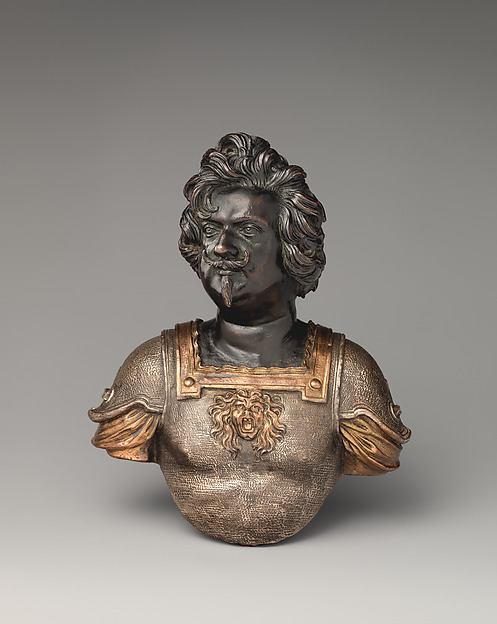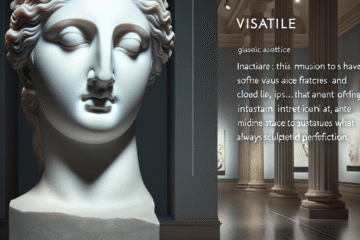
Image title: Paolo Giordano II Orsini, Duke of Bracciano
Medium: Bronze, partially silvered
Date: ca. 1632
Source:
The Met Collection
“
Luck is what happens when preparation meets opportunity.
”
— Seneca the Younger
The Sculpted Mind: Neuroscience Meets Marble in Bernini’s Works
Introduction: A Mind Carved in Stone
When we gaze upon Gian Lorenzo Bernini’s sculptures, we are often struck by a disarming sense of realism—not just in the tactile textures of flesh and fabric, but in raw, palpable emotion seemingly frozen in marble. In recent years, developments in neuroscience have begun to offer compelling explanations for why Bernini’s work moves us so profoundly. These findings suggest that Bernini, with intuitive genius, sculpted not just bodies, but the cognitive and emotional experiences of being human. This article explores how the dynamic realism in Bernini’s oeuvre aligns with modern neuroscientific insights, suggesting he was, in a sense, a neuroscientist of the Baroque.
I. The Baroque Brain: Emotion and Movement in Stone
Bernini’s career blossomed during the Baroque era, a time when art was meant to awe, provoke, and stir the soul. The Catholic Church, responding to the Reformation, harnessed the emotive power of the arts to reignite spiritual fervor. Under this ethos, Bernini produced works like “The Ecstasy of Saint Teresa” and “Apollo and Daphne,” where motion and emotion intertwine seamlessly. Modern neuroscience has identified limbic regions, such as the amygdala, as central to emotional processing. Bernini’s ability to evoke visceral reactions mirrors the brain’s empathetic response when we see dynamic facial expressions and bodily gestures. His sculptures act almost like fMRI snapshots of feeling—eliciting mirror neuron activation and forging empathic engagement centuries before these mechanisms were scientifically known.
II. Perception in Marble: Visual Cues and Brain Decoding
Bernini exploited the way humans process visual stimuli. In “David,” the intensity of physical exertion is captured mid-action, inviting the viewer to complete the motion mentally. Cognitive science explains that our brains are wired to anticipate and complete unfulfilled movements, a concept known as predictive coding. Bernini’s compositions engage this mechanism with dramatic effect: twisted torsos, extended limbs, and dynamic diagonals lead the eye and mind through energy frozen in time. From a neuroscientific viewpoint, his art simulates life not just visually but cognitively, making static stone seem kinetic and alive.
III. Faces of Feeling: The Neuroaesthetics of Expression
One of Bernini’s hallmarks is his treatment of the human face as a landscape of emotion. In “The Ecstasy of Saint Teresa,” the titular figure’s face oscillates between spiritual transcendence and sensual abandon. According to studies in neuroaesthetics, viewers respond most deeply to depictions of emotional ambiguity, as they activate regions of the prefrontal cortex involved in social cognition and introspection. Bernini’s careful balancing of expressive detail triggers this cognitive probing, leading viewers to project their own interpretations onto his marble visages. The result is art that feels deeply personal and psychologically immersive.
IV. Intuitive Science: Bernini’s Manual of the Mind
While Bernini had no formal knowledge of neuroscience, his approach was methodically empirical. He studied cadavers, observed human behavior, and even used clay models to iterate expressions and gestures. This aligns with the scientific method—hypothesis, experiment, observation. His studio functioned like a proto-neuroscience lab, guided by intuition rather than instruments. In this sense, Bernini may be seen not merely as a sculptor, but as a cognitive cartographer, mapping out how physical form corresponds to mental state centuries before psychology formalized such inquiries.
V. A Legacy Recast: Bernini and the Future of Neuroaesthetics
In today’s interdisciplinary landscape, Bernini’s work offers a unique bridge between art and science. Contemporary studies in neuroaesthetics continue to validate the powerful connections he drew between form, psychology, and viewer response. Technologies such as eye-tracking and brain imaging now measure what Bernini understood instinctively: that art can model neural activity, creating shared emotional experiences. As AI begins to generate visual art based on emotional algorithms, Bernini’s legacy prompts us to ask: can machines ever sculpt the soul as he once did with marble?
Conclusion: The Brain Behind the Chisel
Gian Lorenzo Bernini, working amidst candlelight and centuries of theological tradition, unwittingly anticipated many of the neurological insights now being explored by modern science. His sculptures, though immobile, move us deeply because they align with the ways our brains are designed to perceive, empathize, and feel. In doing so, Bernini reminds us that great art often precedes great science—not because it explains the world first, but because it captures human experience with uncanny truth.



